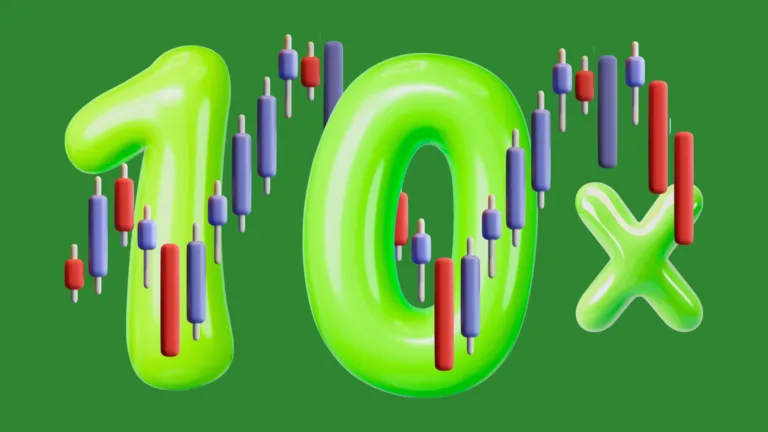Top 5 Bearish Candlestick Patterns for Crypto Trading
Technical analysis remains one of the best tools for analyzing market trends and price action—and the same applies to today’s crypto market. For traders, having a solid understanding of bearish candlestick patterns is essential.
Key Takeaways:
ShowCrypto Trading with Bearish Candlestick Patterns

The use of candlestick patterns in trading dates back to the 18th century when Japanese rice traders first developed this technical analysis method.
Today, these patterns remain crucial tools for cryptocurrency traders seeking to identify potential market reversals and optimal entry and exit points.
This article examines the five most significant bearish candlestick patterns in cryptocurrency trading, providing detailed trading strategies and historical examples of their effectiveness.
1. Bearish Engulfing Pattern
The Bearish Engulfing consists of a small bullish candle followed by a large bearish candle that completely “engulfs” the body of the previous candle.
This engulfing action visually represents how selling pressure has overwhelmed buying interest, indicating that the bullish momentum has faded and a potential reversal is imminent.
Trading Strategy with Bearish Engulfing Pattern
For trading this pattern effectively:
- Entry Point: Enter a short position on the opening of the candle following the engulfing pattern, after confirming it’s bearish. This confirmation is crucial to avoid false signals.
- Stop-Loss Placement: Place your stop-loss order above the high of the engulfing candle, as this level represents the recent peak that sellers couldn’t breach.
- Exit Strategy: Set your profit target at the nearest significant support level. This could be previous resistance turned support or other technical support levels identified on the chart.
Historical Bitcoin Example of Bearish Engulfing Pattern
A notable instance of this pattern appeared in Bitcoin’s price action in December 2024.
On December 19, Bitcoin’s price tested $99,047, briefly falling below the psychologically important $100,000 level for the first time since December 13.
A bearish engulfing pattern was forming on Bitcoin’s weekly chart during this period, causing concern among traders about a potential downside move.
This pattern emerged following market sell-offs triggered by the U.S. Federal Reserve’s announcement about expected rate cuts in 2025.
2. Evening Star Pattern
The Evening Star is a three-candlestick formation that signals the end of an uptrend and a potential bearish reversal.
This pattern carries significant weight in predicting market tops. The Evening Star consists of:
- A large bullish candle, showing strong buying pressure
- A small indecisive candle (often a doji or small-bodied candle) that gaps up, showing hesitation in the market
- A large bearish candle that closes below the midpoint of the first candle, confirming the reversal
Trading Strategy with Evening Star Pattern
For effective trades using this pattern:
- Entry Point: Enter a short position after the third candle completes, confirming the pattern formation. The ideal entry is at the opening of the next candle following the pattern.
- Stop-Loss Placement: Place your stop-loss above the “star” (the middle candle) and above the resistance level formed by the pattern.
- Exit Strategy: Target the next significant support level or use technical analysis tools like Fibonacci retracement levels to determine potential price targets.
Historical Ethereum Example of Evening Star Pattern
On Ethereum’s M30 chart, an Evening Star pattern formed at a local top of $3,436.50, which included another bearish reversal pattern—a shooting star.
This combined signal provided a strong indication of price reversal and offered traders an opportunity to open short positions.
In another example, an Evening Star pattern formed on Ethereum at the $3,321.14 level during a consolidation phase after bulls failed to break through that resistance level, providing another shorting opportunity before the price declined further.
3. Three Black Crows Pattern
This pattern consists of three consecutive red (bearish) candlesticks with relatively short wicks.
Each candle opens within the real body of the previous candle and closes at a lower level, demonstrating steadily increasing selling pressure over three trading sessions.
By the time this pattern completes, the asset’s price will have dropped considerably from its starting point.
Trading Strategy with Three Black Crows Pattern
For trading the Three Black Crows effectively:
- Entry Point: Enter a short position after the third bearish candle confirms the pattern. Some traders prefer to wait for a small retracement before entering to avoid selling at oversold conditions.
- Stop-Loss Placement: Place your stop-loss above the high of the first crow (first bearish candle) to protect against false breakouts.
- Exit Strategy: Set targets at previous support levels or use technical indicators like the Relative Strength Index (RSI) to identify potentially oversold conditions where you might want to take profits.
4. Bearish Harami Pattern
The Bearish Harami is a two-candle reversal pattern that signals a potential shift from bullish to bearish momentum. The Bearish Harami consists of two candles:
- A large green (bullish) candle with a wide range of price action
- A smaller red (bearish) candle whose body is completely contained within the body of the previous candle
The crucial aspect is that the smaller red candle should not exceed a significant portion of the “real body” of the preceding green candle.
This pattern shows that after a strong bullish move, the bulls have lost momentum, and bears are gaining control.
Trading Strategy with Bearish Harami Pattern
For trading the Bearish Harami pattern:
- Entry Point: Enter a short position after confirmation of the pattern, typically on the next candle after the Harami completes. Confirmation can be a bearish candle following the pattern or a break below the low of the Harami pattern.
- Stop-Loss Placement: Place your stop-loss above the high of the first (bullish) candle to protect against false signals.
- Exit Strategy: Target previous support levels or use technical analysis tools like Fibonacci retracement to identify potential price targets.
5. Dark Cloud Cover Pattern
The Dark Cloud Cover is a bearish reversal pattern particularly effective for short-term trading and is frequently used by cryptocurrency traders. This two-candle pattern consists of:
- A strong bullish candle representing continued upward momentum
- A bearish candle that opens above the previous day’s close but closes below the midpoint of the bullish candle
This pattern shows that although bulls attempted to push prices higher (indicated by the gap-up opening), bears ultimately took control, closing the price significantly lower and signaling a potential trend reversal.
Trading Strategy of Dark Cloud Cover Pattern
For effective trading using this pattern:
- Entry Point: Enter a short position after the second (bearish) candle completes and confirms the pattern. Some traders wait for the next candle to open below the close of the bearish candle for additional confirmation.
- Stop-Loss Placement: Place your stop-loss above the high of the second candle to limit potential losses if the reversal fails to materialize.
- Exit Strategy: Target previous support levels or use a risk-reward ratio (such as 1:2 or 1:3) to determine your take-profit level.
Conclusion
Key patterns like Bearish Engulfing, Evening Star, Three Black Crows, Bearish Harami, and Dark Cloud Cover each signal possible downward shifts when correctly interpreted.
Historical cases with Bitcoin and Ethereum show these patterns can align with price reversals.
However, for better accuracy, traders should use them alongside technical indicators, volume data, and market context.
Understanding bearish candlestick patterns is a practical step toward building a solid trading strategy that manages risk and adapts to market volatility.







